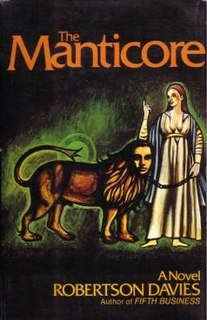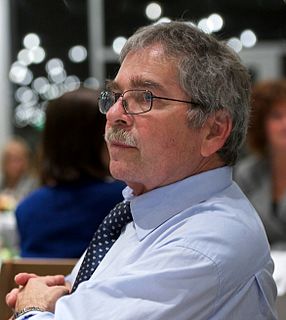Related Research Articles

Kurt Wüthrich is a Swiss chemist/biophysicist and Nobel Chemistry laureate, known for developing nuclear magnetic resonance (NMR) methods for studying biological macromolecules.

Otto Heinrich Warburg, son of physicist Emil Warburg, was a German physiologist, medical doctor, and Nobel laureate. He served as an officer in the elite Uhlan during the First World War, and was awarded the Iron Cross for bravery. He was the sole recipient of the Nobel Prize in Physiology or Medicine in 1931. In total, he was nominated for the award 47 times over the course of his career.

The Manticore is the second novel in Robertson Davies' Deptford Trilogy.

Rolf Martin Zinkernagel is Professor of Experimental Immunology at the University of Zurich. He was awarded the Nobel Prize in Physiology or Medicine in 1996 for the discovery of how the immune system recognizes virus-infected cells.
Nägeli is a surname. Notable people with this surname include:

Walter Jakob Gehring was a Swiss developmental biologist who was a professor at the Biozentrum Basel of the University of Basel, Switzerland. He obtained his PhD at the University of Zurich in 1965 and after two years as a research assistant of Ernst Hadorn he joined Alan Garen's group at Yale University in New Haven as a postdoctoral fellow.

Harald Naegeli is a Swiss artist best known as the "Sprayer of Zurich" after the graffiti he sprayed in the late 1970s onto walls and buildings in Zürich, Switzerland.

Rudolf Aebersold is a Swiss biologist, regarded as a pioneer in the fields of proteomics and systems biology. He has primarily researched techniques for measuring proteins in complex samples, in many cases via mass spectrometry. Ruedi Aebersold is a professor of Systems biology at the Institute of Molecular Systems Biology (IMSB) in ETH Zurich. He was one of the founders of the Institute for Systems Biology in Seattle, Washington, where he previously had a research group.

Johannes Georg Bednorz is a German physicist who, together with K. Alex Müller, discovered high-temperature superconductivity in ceramics, for which they shared the 1987 Nobel Prize in Physics.

Gerd Binnig is a German physicist. He is most famous for having won the Nobel Prize in Physics jointly with Heinrich Rohrer in 1986 for the invention of the scanning tunneling microscope.
Cilag AG is a Swiss pharmaceutical company. Cilag is a subsidiary of American pharmaceutical giant Johnson & Johnson. The company's global marketing activities are operated by Janssen-Cilag, a merger with another Johnson & Johnson subsidiary, Janssen Pharmaceutica.

Naegeli–Franceschetti–Jadassohn syndrome (NFJS), also known as chromatophore nevus of Naegeli and Naegeli syndrome, is a rare autosomal dominant form of ectodermal dysplasia, characterized by reticular skin pigmentation, diminished function of the sweat glands, the absence of teeth and hyperkeratosis of the palms and soles. One of the most striking features is the absence of fingerprint lines on the fingers.
Oskar Naegeli, was a Swiss dermatologist and chess master. He represented Switzerland at the Chess Olympiads in 1927, 1928, 1931 and 1935, as well as at the unofficial Olympiad in 1936 at Munich.

To Rock or Not to Be is the twelfth studio album by the Swiss hard rock band Krokus, released in 1995. The album stayed seven weeks in the top ten of the Swiss charts, peaking at number 5.
Jules Angst is a Swiss academic who is Emeritus Professor of Psychiatry at Zurich University in Zurich, Switzerland, and Honorary Doctor of Heidelberg University in Heidelberg, Germany.

Andrea Prader was a Swiss scientist, physician, and pediatric endocrinologist. He co-discovered Prader–Willi syndrome and created two physiological sex development scales, the Prader scale and the orchidometer.

Silvia Arber is a Swiss neurobiologist. She teaches and researches at both the Biozentrum of the University of Basel and the Friedrich Miescher Institute for Biomedical Research in Basel Switzerland.
Lelio Orci was an Italian scientist in the field of endocrinology and diabetes and emeritus professor in the Department of Morphology at the University of Geneva Medical School.

Christian Lüscher, M.D, is a Swiss neurobiologist and full professor at the Department of Basic Neurosciences of the University of Geneva. He is also an attending in neurology at the Geneva University Hospital. Lüscher is known for his contributions in the field addiction, particularly for establishing links of causality between the drug-evoked synaptic plasticity and adaptive behavior in mice.
The Otto-Naegeli-Preis is a Swiss award for medical research that is awarded every two years. It is one of the most prestigious Swiss medical awards and is given with an award sum of 200,000 Swiss Francs. It was established 1960 and is named after Otto Naegeli, a former professor of internal medicine at the University of Zurich.
References
- 1 2 "Whonamedit? Otto Naegeli".
- ↑ Naegeli O (1900). "Über rothes Knochenmark und Myeloblasten". Deutsche Medizinische Wochenschrift. 26 (18): 287–290. doi:10.1055/s-0029-1203820.